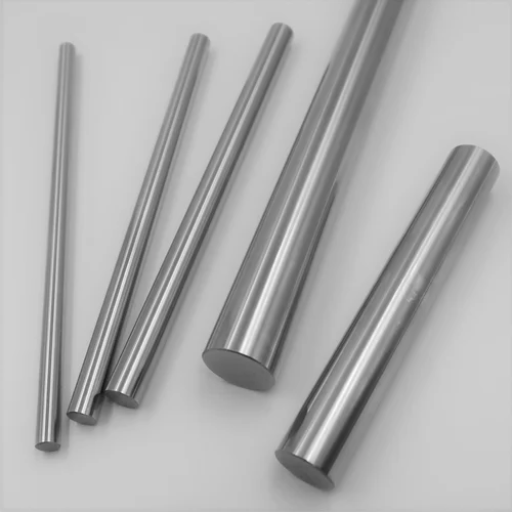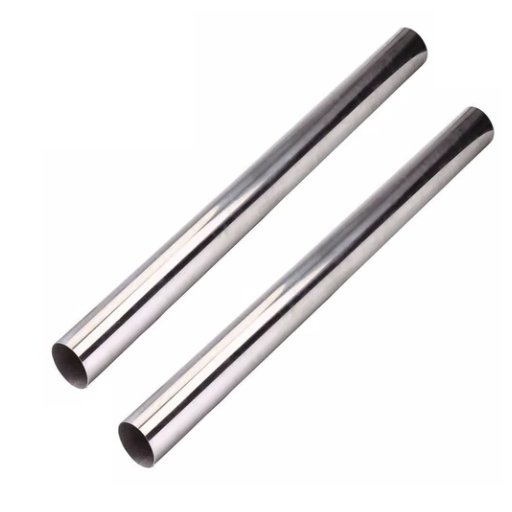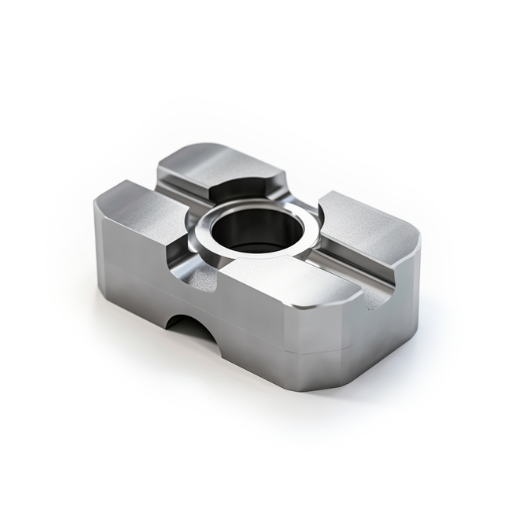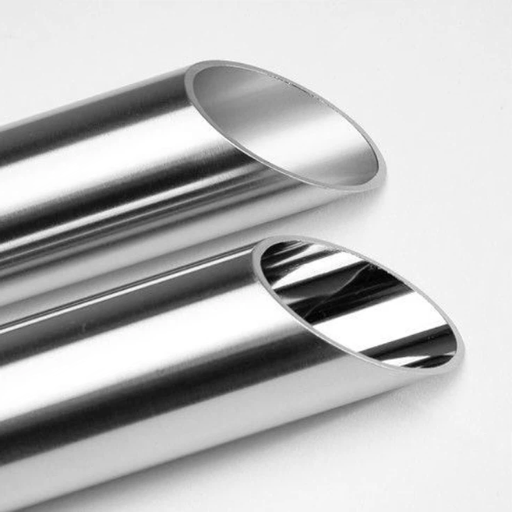One of the most important characteristics of 416 stainless steel compared to other grades is its amazing versatility. It is a corrosion-resistant alloy that possesses magnetic properties and is easy to machine. Because of its great strength and resistance to corrosion, this alloy is widely used across various industries. This blog will break down the unique aspects of 416 stainless steel’s chemical composition, mechanical properties, and the main areas it is utilized. Furthermore, we will analyze the impact its machability and magnetism have on the industry. By the end of the post, the hope is that readers will have a full grasp of why 416 stainless steel is a popular choice in many specialized use cases.
What is 416 Stainless Steel?

416 stainless alloy goes metallic and is classified under martensitic stainless steels due to its susceptibility to corrosion. With notable amounts of chromium and sulfur, this steel offers enhanced strength, improved wear, and better machining. These traits make the material magnetic and enable its use in precision machining applications, reinforcing shafts, valves, and fasteners.
Defining Grade 416 Stainless Steel
416 grade stainless steel is a type of chromium martensitic stainless steel alloy grade that is known for its machinability and moderate corrosion resistance. It contains about 12-14% of chromium, which adds strength and makes it less prone to environmental wear. Furthermore, the addition of sulfur improves its machinability. This grade can be heat-treated and, therefore, can be tailored to specific applications based on required strength and hardness. Although it is less corrosion resistant than the austenitic grades, 416 provides adequate protection in mild environments. Common applications include precision screws, shafts, fasteners, and valves, which is why it is widely used in the automotive, aerospace, and general engineering industries where moderate corrosion resistance, high strength, and good machinability is needed.
Comparison with Other Stainless Steel Grades
416 stainless steel stands out from other grades because of its exceptional machinability, often regarded as one of the best stainless steels when it comes to machining. Unlike austenitic grades like 304 and 316, 416 has lower corrosion resistance, but greater strength and wear resistance because of its martensitic structure. 416 is considered weaker than 304 in terms of versatility and corrosion resistance, but it is much easier to machine. When compared with 410, a martensitic grade, 416 is easier to machine due to the addition of sulfur. However, the added sulfur reduces its toughness and corrosion resistance when compared to 410. This makes material selection dependent on the balance of machinability, strength, and environmental conditions necessary for the application.
The Role of High Sulfur Content in 416
The high sulfur content in 416 enhances its machinability by facilitating chip-breaking during cutting, which makes 416 stainless steel highly sought after for applications with severe machining. However, additional sulfur reduces the material’s toughness and general corrosion resistance, in comparison to 410 grade steel.
Technical Aspects Affected by Sulfur in 416:
- Machinability: Sulfur improves machinability ratings to such an extent that 416 is classified as one of the most machinable stainless steels, often rated around 85% compared to carbon steel 1212.
- Toughness: Includes precludes 416 from structural applications that require high resilience to dynamic forces due to low impact toughness.
- Corrosion Resistance: While adequate for many environments, 416’s corrosion resistance is slightly lower than 410 grade due to the presence of sulfur inclusions.
- Application Suitability: Best suited for screws, gears, and shafts where easy machining supersedes ultimate corrosion resistance or toughness.
These factors deliver the capability to withstand precision machining, environmental and mechanical considerations, and sculpt 416 as a carefully tailored material.
Why is 416 Stainless Steel Magnetic?

Considered a characteristic of martensitic stainless steels, the ferritic microstructure makes 416 magnetic. Abrupt changes to ferrite provide magnetic properties unlike austenitic stainless steels, which are mostly non-magnetic. Moreover, heat treatment processes for optimizing hardness and machinability in 416 can improve its response to magnetism.
The Martensitic Stainless Steel Structure
As an example, 416 stainless steel is martensitic since the structure consists predominantly of martensite resulting from heat treatment. The resultant properties include high strength, hardness, as well as wear resistance. The ferritic phase in the alloy is responsible for magnetism, which is inherent to all martensitic steels. Also, controlled addition of chromium improves resistance to corrosion without affecting machinability or magnetism.
Influence of Chromium and Other Elements
Chromium is essential in martensitic steels because it enhances the corrosion resistance and also contributes to strength and hardness. In stainless steels, chromium content is between 11% and 17% to guarantee that a passive protective layer will be formed for oxidation and rust prevention. Carbon and molybdenum (up to 2%) help increase hardness through the formation of carbide structures while enhancing pitting resistance in severe corrosive environments. If nickel is present, then toughness can also improve. These alloys need to be balanced to keep the machinability and magnetic characteristics of the martensitic steels, to retain their versatility in industrial uses.
Differences Between Magnetic and Non-Magnetic Stainless Steels
Magnetic stainless steels are found in ferritic and martensitic grades and are magnetic because of their body-centered, cubic or BCC crystal structure. These steels tend to have traces of nickel that do not interfere with magnetic properties. In contrast, non-magnetic stainless steels, like austenitic grades, have a face-centered cubic (FCC) structure, which cancels magnetism. Auburnitic steels have a higher amount of nickel, which enhances corrosion resistance and increases toughness, but they lose almost all magnetic properties. This difference allows the use of magnetic grades in places demanding some response from magnetic fields, while non-magnetic grades are used where noncorrosion defense and non-magnetic performance are the main objectives.
How Does 416 Stainless Steel Compare to 304 and 316?

416 stainless steel is a martensitic grade best known for its excellent machinability because of its high sulfur content. 416 is the only magnetic grade in partially ferrous steels, unlike the austenitic, non-magnetic 304 and 316, and has moderate sullivan corrosion resistance acceptable in less harsh surroundings. It does not possess the high corrosive properties of 304 or the extreme protection from deadly chemicals and saltwater of 316. However, 416 is an economically viable option where easy processing and high wear resistance are needed.
Corrosion Resistance: 416 vs. 304 vs. 316
Here’s what I understand after comparing the corrosion resistance of stainless steels 416, 304, and 316. In this case, 304 and 316 outperform 416 because of 416’s lower chromium content and higher carbon content, as it is a martensitic grade. 304 has good general corrosion resistance and is generally acceptable for use in many environments. 316 is superior because of its added molybdenum, which increases the alloy’s resistance to chlorides, harsh chemicals, and other corrosive materials that are often found in marine or highly corrosive environments. If corrosion resistance is prioritized, then it has to be 316 for the clear-cut choice against 304 or 416. That being said, 416, while being the worst in resistance, performs well when machinability and resistance to wear are the primary concerns and exposure to corrosive environments is not an issue.
Machinability and Free-Machining Features
Considering the machinability of the various grades of stainless steel, 416 is the most machinable due to its free machining characteristics. This grade contains added sulfur, which increases its machinability, leading to faster cutting; therefore, reducing tool wear. It is best suited for high-efficiency and precision production high fabrication jobs.
For reference:
- Machinability Rating:
- 416 Stainless Steel: Machinability rating of roughly 85%(exemplary for stainless steels).
- 304 Stainless Steel: Machinability rating of roughly 45%(moderate suited due to balance of corrosion resistance).
- 316 Stainless Steel: Machinability rating of roughly 36%(lower due to higher alloy content and tougher materials).
- Recommended Cutting Speed:
- 416 Stainless Steel: 150-200 feet/min(45-60 meters/min).
- 304 and 316 Stainless Steel: 80-140 feet/min(25-42 meters/min) depending on tool material.
It is worth emphasizing that 416 stainless steel has the best machinability, but in comparison to 304 and 316, stainless steel 416 lacks some corrosion resistance. For applications where corrosion is an important factor 316 is the best option even though it has lower machinability. Remember to always think about the requirements of the material for the specific application.
Applications and Strength, and Hardness Differences
416 stainless steel possesses exceptional machinability which is why it’s used in the manufacturing of screws, bolts, nuts, pump shafts, valve parts, etc. Its ease of machining makes it a go-to material for precision parts in the automotive and aerospace industries. However, when corrosion resistance is required, stainless steels 304 and 316 are preferred. 304 stainless steel is common in food-grade appliances, kitchen equipment, pipes, and auto trims, and 316 is widely used in medical devices, chemical processing, and marine industries because of its higher resistance to chlorine and harsh chemicals.
Strength and Hardness Differences
- 416 stainless steel
- Tensile Strength: 540-760 MPa (usually annealed)
- Hardness (Brinell): Approximately 150-280 HB, depending on the heat treatment
- Used in industries requiring moderate strength with advanced machinability.
- 304 stainless steel
- Tensile Strength: ~505 MPa
- Hardness (Brinell): Around 170 HB
- Best strength-to-corrosion resistance ratio, which makes it a good candidate for general use.
- 316 stainless steel
- Tensile Strength: ~515 MPa
- Hardness (Brinell): Around 150 to 160 HB.
- Best in terms of corrosion resistance, especially in harsh and chloride-rich environments, but has lower machinability.
While selecting a grade from those offered, one should keep in mind critically important factors like resistance to corrosion, other mechanical requirements, and the necessary level of machinability for the specific application.
What are the Properties and Applications of 416 Stainless Steel?

416 Stainless Steel is a martensitic grade, which means that it has been hardened by martensitic transformation and shows excellent sulfur-driven machinability, which facilitates extensive machining. Its key properties include moderate corrosion resistance, good hardness, and tensile strength. Typical mechanical characteristics include a tensile strength of approximately 415-585 MPa and a hardness of around 200 HB.
Uses of 416 stainless steel include pump shafts, screws, gears, and valve parts. Although it is not as corrosion resistant as 316 austenitic grades, it can withstand moderate levels of corrosion. Its lower machining time and cost ensure precision parts are made economically.
Heat Treatment and Its Effects
The mechanical properties of 416 stainless steel, such as hardness and tensile strength, can be considerably improved through heat treatment. Processes like annealing, hardening, and tempering achieve the desired structure of strength and machinability. For instance, hardening entails heating the steel to a high temperature and then rapidly cooling it to improve strength and wear resistance. The sharpening is followed by tempering, which involves reheating to a lower temperature. Tempering reduces brittleness while retaining hardness. I’ve also noted that improper treatment can negatively affect its corrosion resistance, so it’s crucial to optimize treatment conditions for specific applications.
Common Uses and Industry Applications
From my experience and research, treated steel is common across many sectors because of its enhanced mechanical properties. One example is the automotive sector, which uses this steel extensively in the production of components such as gears, axles, and crankshafts, which need to be strong and wear-resistant. The same steel is also used in construction in the form of structural beams and fasteners, which need to be durable under stress. Toolmaking is another major area, especially when it comes to drill bits and cutting tools, which need sharpened molds of great precision and great skill, and heat-treat them to achieve that.
Key parameters include hardness values from 40 to 60 HRC for tooling applications and a tensile strength of about 1,000 to 1,300 MPa for construction materials. Achieving such parametric optimization is critical, as it is evident that the material must meet the standards of its application without compromising on quality or performance.
The Role of Weldability in Application
Weldability or joint integration by welding is one of the major parameters for consideration in construction and manufacturing. These parameters can include composition and relative thermal resistivity, roughness, and stress of the material. For instance, low-carbon steels show great properties and facilitates weldablilty while high-carbon steels or some alloys tend to crack and need heating before and after welding.
The primary key value for estimation of weldability most likely would be the carbon equivalent (CE) for estimating potential cracking during welding. The commonly accepted valuation principle of CE, which grants the possibility of uncomplicated welding and cracking caused by hydrogen, is preferred to be at sub 0.4% level. Furthermore, high enabling pre-heating tends to be the range 150ºC to 250ºC for high-strength steels to avoid thermal stress.
Weldability considered aids engineers to achieve strong and enduring joints while maintaining the overall stability of the structure, thus shielding hazards that may be caused by unrestrained forces.
How Does Grade 416 Stainless Steel Perform in Various Environments?

Grade 416 stainless steel stands out due to its outstanding machinability, enabling its use across various industries. Nonetheless, its performance in different environments depends on the specific conditions. Grade 416 can be mildly corrosive, but not as much as other stainless steels, namely 304 or 316. It works well in dry, moderately moist, and moderately hot conditions, however, it is more likely to rust when in highly acidic or chloride-rich environments. Furthermore, while a careful balance between hardness and toughness must be maintained to avoid impairment in performance during demanding applications, heat treatment does improve performance about strength and softness.
Performance in Moderate Corrosion Resistance Environments
In regards to stainless steel 410, performance evaluation reveals adequate durability in moderate corrosion resistance environments because of passive oxide film formation. This passive layer makes the alloy reasonably resistant to moisture and mildly acidic environment, but makes it highly susceptible to pitting and crevice corrosion in salty and chloride-rich surroundings compared to 304 and 316 grades.
The most important features for 410 stainless steel regarding the above-mentioned environments are:
- Corrosion Resistance: Moderate, but not suitable for highly marine or acidic conditions.
- Chromium Content: This grade steel has around 12-14% chromium which aids in passive protective layer formation.
- Maximum Operating Temperature: 700°C (1,292°F) for short period. Long exposure can lead to reduced corrosion resistance.
- Tensile Strength: Achievable values between 500-700 MPa with dependence on heat treatment.
- Hardness: Up to ~35 HRC after heat treatment.
Maintaining regular cleaning and avoiding strong chemicals can improve performance in a moderate environment. Controlled heat treatment is essential to provide a reliable balance of mechanical properties, corrosion resistance, and reliability for consistent, dependable performance.
Utilization in High and Low Temperature Conditions
A material‘s heat treatment and metallurgical properties decide how it will behave in high and low temperature environments.
High Temperature:
The material demonstrates stable mechanical performance up to around 400°C, performing well at this temperature. Exposing it past these limits may lead to a gradual reduction in tensile strength and hardness because the microstructure softens. 550°C is a benchmark; crossing this mark typically leads to loss of mechanical integrity and poor exposure time.
Low Temperature:
Ductility, as well as impact toughness within the material, is retained under subzero conditions of up to -40°C, possessing cryogenic applications. It is important to highlight the fact that decreased temperature may lead to slight levels of brittleness, requiring operational toughness verification.
Remaining within these parameters, performing scheduled system checkups in omni extreme environments leads to greater reliability paired with performance.
Comparative Analysis with Carbon Steel
When comparing this material to carbon steel, several key differences stand out. Firstly, the material’s superior low-temperature performance is notable, as carbon steel tends to become brittle under similar conditions. Additionally, it offers better resistance to corrosion, making it a more suitable choice for environments prone to humidity or chemical exposure. From a mechanical standpoint, this material retains ductility and impact toughness more effectively than carbon steel, particularly in demanding applications. However, it is worth mentioning that carbon steel is often more cost-effective and easier to machine, which could influence the selection process depending on specific project requirements.
References
- Stainless Steel – Grade 416 (UNS S41600) – A detailed overview of the properties and applications of 416 stainless steel.
- 416 Stainless Steel – Penn Stainless – Information on machinability and other characteristics of 416 stainless steel.
- Stainless Steel 416 Grade Data Sheet – A comprehensive data sheet on the grade’s properties and uses.
Frequently Asked Questions (FAQ)
Q: What are the main characteristics of 416 stainless steel?
A: 416 stainless steel is a magnetic stainless steel known for its excellent machinability, due to its free-machining properties. It belongs to the 400 series and can be hardened by heat treatment, offering high tensile strength. It is often used in applications requiring good corrosion resistance and high strength.
Q: How does 416 stainless steel compare to 304 stainless steel?
A: While 304 stainless steel is an austenitic alloy, offering superior corrosion resistance and non-magnetic properties, 416 stainless steel is a martensitic alloy known for its magnetic properties and superior machinability. 416 is easier to machine than 304 but offers less corrosion resistance.
Q: Can 416 stainless steel be welded?
A: Although alloy 416 can be welded, it is not as weldable as austenitic grades like 304. Special care must be taken to avoid hot cracking and other welding issues. Preheating and post-weld annealing are often recommended to improve welding outcomes.
Q: What is the chemical composition of 416 stainless steel?
A: The chemical composition of 416 stainless steel typically includes chromium (12-14%), manganese (1.25% max), silicon (1% max), carbon (0.15% max), sulfur (0.15% max), phosphorus (0.06% max), and iron as the balance. Its high sulfur content is responsible for its free-machining properties.
Q: What are the equivalent grades for 416 stainless steel?
A: Some equivalent grades for 416 stainless steel include UNS S41600, AISI 416, and 1.4005. These designations ensure that the material meets similar standards of chemical composition and mechanical properties across different standards and specifications.
Q: How is 416 stainless steel hardened and tempered?
A: 416 stainless steel can be hardened by heat treatment. It is typically heated to a temperature range of 925-1010°C (1700-1850°F) and then oil-quenched. Tempering is usually performed at temperatures between 400-650°C (750-1200°F) to achieve the desired hardness and mechanical properties.
Q: What are common applications for 416 stainless steel round bar?
A: 416 stainless steel round bar is commonly used in applications that require superior machinability and moderate corrosion resistance, such as in the manufacturing of screws, gears, valves, and shafts. It is also used in the production of parts that require high tensile strength and precision machining.
Q: How does 416 stainless steel perform in chloride environments?
A: 416 stainless steel has moderate corrosion resistance and may not perform well in environments with high chloride concentrations. In such conditions, it is more prone to pitting and crevice corrosion compared to more corrosion-resistant grades like 316 stainless steel.
Q: What surface finish can be achieved with 416 stainless steel?
A: Due to its superior machinability, 416 stainless steel can achieve excellent surface finishes. It is ideal for applications where both high strength and a high-quality surface finish are required, often achieved through precision machining processes.







